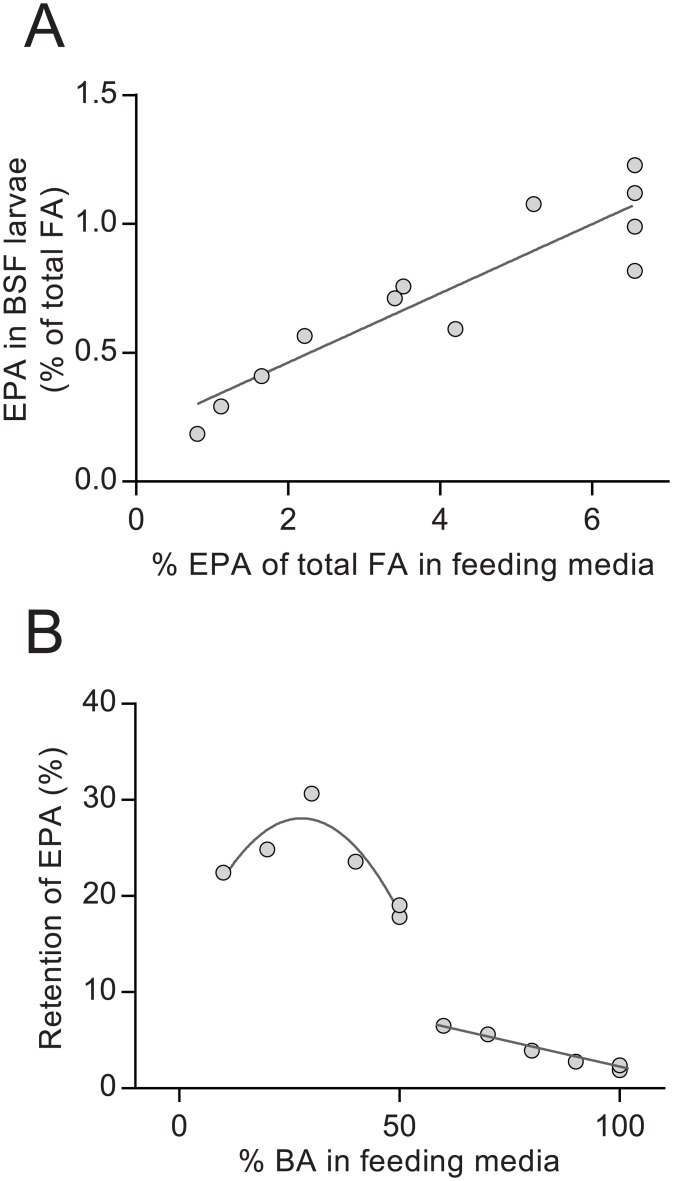Fig 2. EPA concentration and retention.
The concentration of eicosapentaenoic acid (EPA, as % of lipid) in the black soldier fly larvae increased with increased concentrations of EPA in the feeding media, but the retention of EPA decreased dramatically with inclusion of more than 50% brown algae (BA) in the feeding media. Figures show (A) EPA concentrations (% of total fatty acids) of feeding media and black soldier fly larvae with 0–100% of a plant-based feeding media replaced with ground brown algae; and (B) percent of EPA in feeding medium retained by the insect larvae. The BA0 group is not included in the graphs or the calculations, as EPA levels in the larvae as well as in the feeding media was below limit of quantification (0.01 g kg-1).

